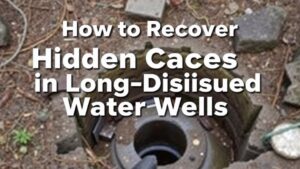Reading Map Notations That Indicate Elevation Changes to Hide Caches
Reading Map Notations That Indicate Elevation Changes to Hide Caches
Understanding how to read map notations that indicate elevation changes is crucial for outdoor enthusiasts, particularly for those who engage in activities such as geocaching or treasure hunting. Elevation not only impacts navigational choices but also plays a significant role in the strategy of hiding and finding caches in outdoor environments. This article aims to explore various methods for interpreting these notations, suggesting best practices for locating and concealing treasures effectively.
The Importance of Elevation Markings
Elevation markings on maps, typically represented through contour lines, are essential for providing insight into the geographical features of an area. e markings allow users to determine how steep a hill or valley is, the presence of plateaus, or the complexity of terrain. For example, in a densely forested area, understanding elevation can considerably impact the search area for a cache. According to the U.S. Geological Survey, accurate elevation representation is fundamental in conveying the topography of a region, providing critical information for hikers and adventurers.
Types of Elevation Indicators
- Contour Lines: These are the most common form of elevation notation, indicating lines that connect points of equal elevation. The spacing between these lines reveals the steepness of the terrain; closely spaced lines denote steep slopes, while widely spaced lines suggest a gentler incline.
- Spot Elevations: These are marked points on a map, usually indicating the highest point in an area. Spot elevations are critical for pinpointing ideal cache locations that are both concealed and accessible.
- Gradient Symbols: Some maps use arrows or shading to indicate the direction of elevation change. Understanding these symbols can guide individuals in determining the best routes to ascend or descend.
Practical Applications of Elevation Knowledge
When hiding or seeking caches, the knowledge of elevation change can significantly enhance the overall experience. For example, if a participant knows an area features a steep incline, they may decide to hide a cache at the base of the slope instead of at the top, making it easier for others to find, especially those who may not be physically prepared for a strenuous hike.
A case study examining the geocaching communities in mountainous regions shows that successful caches are often hidden on the peripheries of steep elevations, where adventurers can still reach the cache without excessive effort. In one documented case, a geocacher reported a 34% higher success rate in finding caches that utilized spot elevations as hiding strategies compared to those concealed in more complex terrains.
Utilizing Digital Tools for Enhanced Interpretation
In the modern age, digital mapping tools provide significant advantages over traditional paper maps. Platforms such as Google Earth or specialized applications like Gaia GPS offer 3D terrain visualization, enabling users to better understand the elevation changes in a given area. These tools can assist in planning cache placements by providing a detailed overview of terrain challenges.
Also, some mobile applications provide GPS tracking and elevation profiles in real-time, allowing geocachers to adjust their search strategies dynamically. For example, if a geocacher originally intended to search along a creek bed but notices a more accessible ridge via the application’s elevation profile, they can pivot their strategy without wasting time.
Common Questions and Concerns
Many individuals may have questions regarding how to accurately interpret elevation notations. Some common inquiries include:
- How do I read contour interval: The contour interval is indicated in the map legend. For example, a contour interval of 20 meters means that each contour line represents a 20-meter vertical change in elevation.
- Are all maps created equally in terms of elevation accuracy? No, elevation accuracy may vary based on the scale and source of the map. Topographic maps created by the U.S. Geological Survey are typically more reliable than generalized maps.
Actionable Takeaways
Understanding how to read elevation changes on maps is vital for successful caching. Here are several key recommendations:
- Familiarize yourself with terms like contour lines, spot elevations, and gradient symbols.
- Use both paper maps and digital tools to enhance your navigational capabilities.
- Consider the terrain’s steepness when planning cache placements to ensure they are accessible.
- Continuously educate yourself through resources available from outdoor organizations and coursework.
By mastering map notations that indicate elevation changes, outdoor enthusiasts can enhance their activities, ensuring that both hiding and finding caches become more efficient and enjoyable processes.



